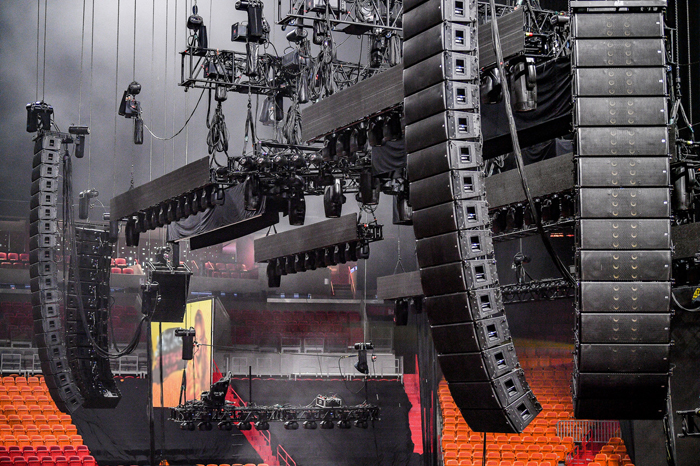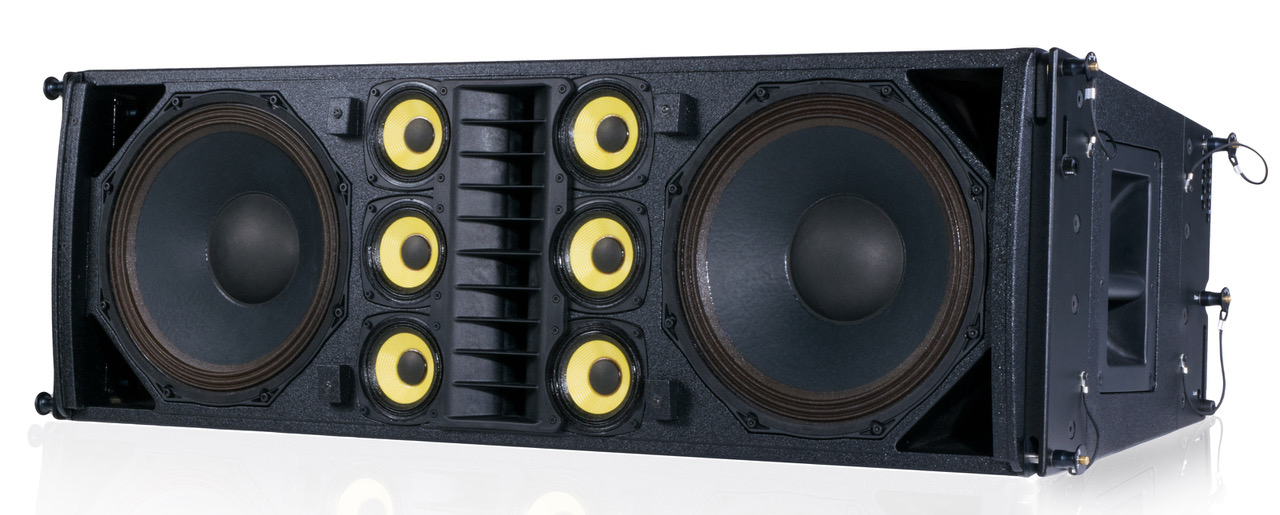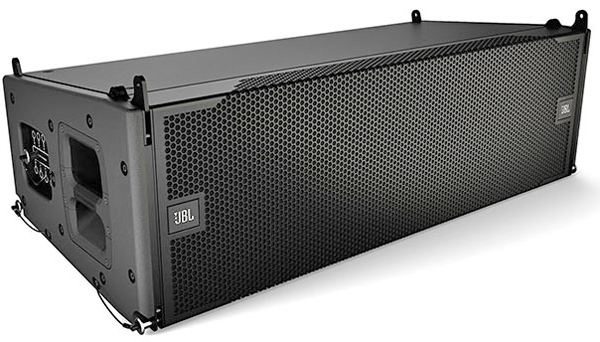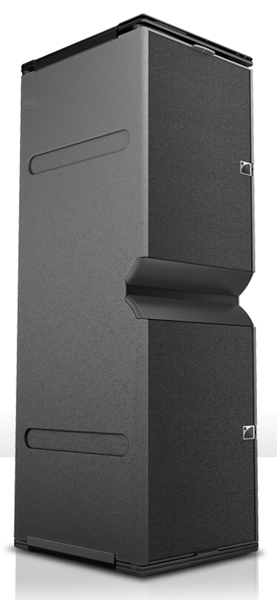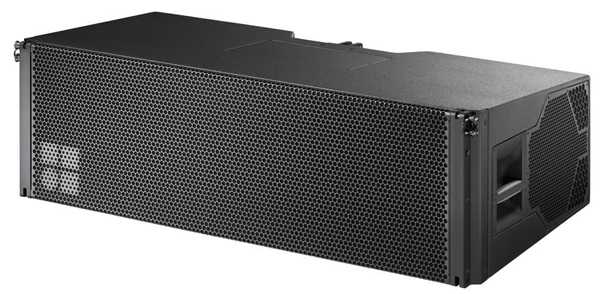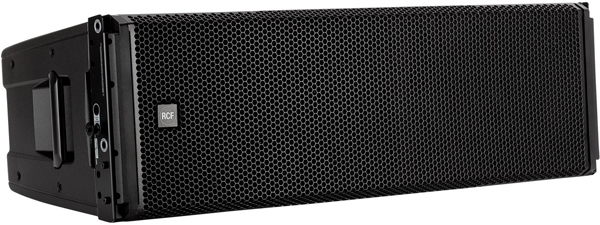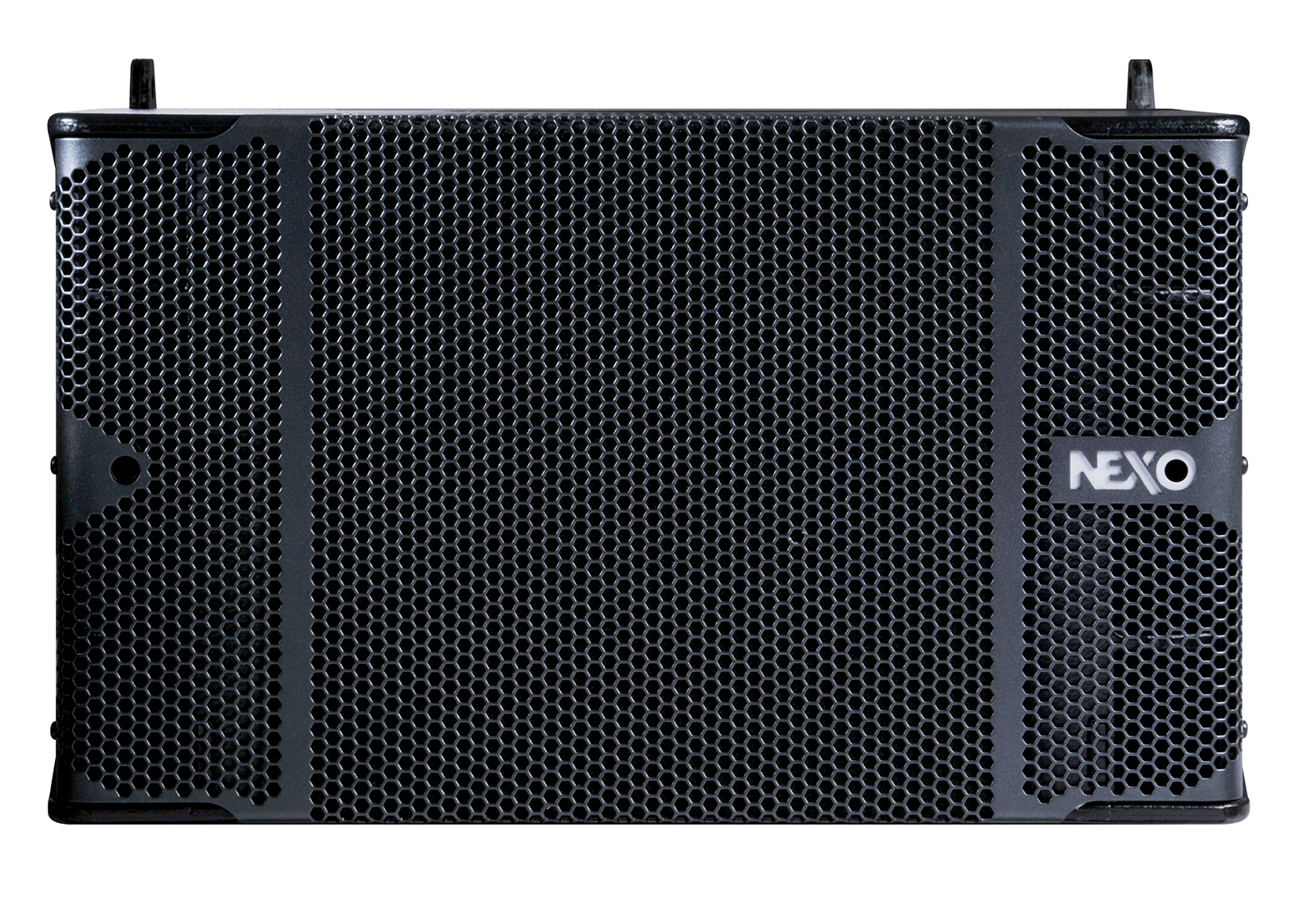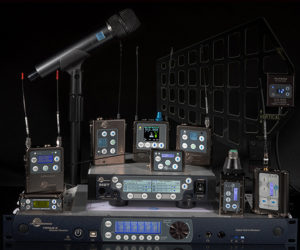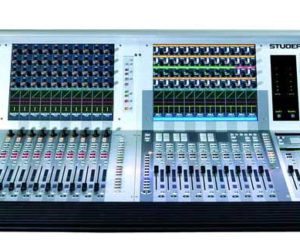Large-format line arrays deliver in terms of output, and in many cases, are now much more than simply loudspeakers, better described as integrated systems.
The vast majority of the models we’re presenting here incorporate dedicated power and DSP packages (onboard or rack mounted), and are outfitted with sophisticated control, networking, and optimization capabilities. Integral rigging is user-friendly and marked by precision and ease of use.
It’s still surprising to some that line arrays have been around for more that half of a century in the guise of column loudspeakers, and most of them in earlier days were voice-range only. Their application was generally for highly reverberant spaces, where a narrow vertical dispersion avoided exciting the reflective room boundaries and, as a result, improved intelligibility of the spoken word.
V-DOSC from L-Acoustics was the first (in the mid-1990s) to show the concert sound world that more level and smoother frequency response can come from fewer drivers in a line array. Now, large-format line arrays (which we loosely identify as models with 12-inch and larger woofers) exist in a wide range of types and options.
Driver configuration and enclosure design remain defining factors. Some models employ dual woofers with a center high-frequency section to provide horizontal symmetry. The simplest systems may just have a single cone and high-frequency driver. Quasi 3-way solutions use dual woofers, but low-pass one woofer at a lower frequency than the other, thereby eliminating lobing at higher frequencies where the drivers become displaced with relation to the frequencies being reproduced.
True 3-way designs operate separate low-, mid- and high-frequency drivers, each in their own band. There are several approaches to horn-loading, which can provide higher sensitivity for additional power. And now, we’re seeing some 4-way systems, with the mid-frequencies subdivided into two sections.
In the listings that follow, note that the horizontal dispersion spec is provided for all models. Vertical dispersion varies, dependent on array structure and configuration.
Also, several companies present more than one choice in this category, and for the most part, we’ve selected the largest and/or the most recently introduced model, with the other options referenced. In addition, several manufacturers also offer complementary array elements with wider angles of coverage that perform better as the lowest near-throw enclosure(s) in vertical arrays.
Enjoy this look at the latest large-format line arrays.
Enhanced Listing Sponsored By VUE Audiotechnik
VUE al-Class line array systems take versatility and sonic definition to a new level through a combination of advanced transducer technology, tightly integrated DSP and
revolutionary Continuous Source Topology (CST). The flagship al-12 is designed specifically for large-scale touring and fixed install applications.
The system is made up of the al-12 acoustic element and the rack-mount VUEDrive V3 Systems Engine that combines powerful DSP with SystemVUE networking capabilities. Inside each al-12 is a selection of VUE’s most advanced transducers, including two 3-inch compression drivers that deliver unparalleled high-frequency performance thanks to the Truextent beryllium diaphragms at their core. They’re flanked by six 4-inch mid frequency units followed by a pair of 12-inch drivers.
An optional al-12SB flyable subwoofer adds low-frequency extension down to 35 Hz and provides versatile rigging options for suspension above or behind al-12 arrays in a variety of configurations, including cardioid arrangements. It can also function as the base of a groundstacked array.
TECHNOLOGY FOCUS:
VUEDrive Systems Engines are engineered to provide VUE loudspeakers with fully optimized, networked DSP and amplification in a 2RU package. VUEDrive supports analog, digital (AES) and Dante network inputs, with SystemVUE software (iOS, OSX and Windows) providing full network control.
OF NOTE:
Continuous Source Topology (CST) allows different al-Class elements to be combined into a single arrays without compromising the continuous line in the mid and high frequencies. It allows users to address everything from coverage and SPL to size, weight and sightlines.
KEY SPECIFICATIONS:
Configuration: 3-way
LF: 2 x 12-in neo woofers
MF: 6 x 4-in neo Kevlar cones
HF: 2 x 1.4-in-exit Truextent beryllium drivers on a precision waveguide
Frequency Response: 47 Hz – 28 kHz
Horizontal Dispersion: 90 degrees
Size (H x W x D) & Weight: 14 x 42 x 16.8 in; 129 lbs
Electronics: Integrated VUEDrive System Engines with SystemVUE control, Dante networking
vueaudio.com
JBL Professional VTX A12
Configuration: 3-way
LF: 1 x 12-in Differential Drive woofer (4th generation design)
MF: 4 x 5.5-in Differential Drive cones on re-designed RBI (Radiation Boundary Integrator)
HF: 3 x dual-diaphragm/dual-voice-coil drivers working with custom phasing-plug and waveguide
Frequency Response: 46 Hz – 19 kHz (Preset: VTX A12)
Horizontal Dispersion: 90 degrees (down to 250 Hz) or 120 degrees (“W” version)
Size (H x W x D) & Weight: 13 x 44 x 19.5 in; 134 lbs
Electronics: VRack with Crown I-Tech HD Series amplifiers, BSS processing, HiQnet Performance Manager configuration/control software
jblpro.com
Adamson E15
Configuration: 3-way
LF: 2 x 15-in neo Kevlar woofers
MF: 2 x 7-in neo Kevlar cones
HF: 2 x 4-in-exit voice coil neo Kevlar drivers (Note: MF/HF coaxially mounted on Co-Linear Drive Modules)
Frequency Response: 60 Hz – 18 kHz
Horizontal Dispersion: 90 degrees
Size (H x W x D) & Weight: 15.4 x 51.4 x 21.4 in; 176 lbs
Electronics: E-Rack with Lab.gruppen PLM amplifiers, audio & AC panels, Ethernet switch
**Adamson also offers the E12 12-in line array
adamsonsystems.com
L-Acoustics K1
Configuration: 3-way
LF: 2 x 15-in woofers, bass-reflex
MF: 4 x 6.5-in cones
HF: 3 x 3-in drivers on DOSC waveguides
Frequency Response: 35 Hz – 20 kHz
Horizontal Dispersion: 90 degrees
Size/Weight: 17.2 x 52.8 x 20.5 in; 234 lbs
Electronics: LA-RAK with LA8 amplified controllers, includes signal, network & power distro panels
**L-Acoustics also offers the K2 12-in line array
l-acoustics.com
d&b audiotechnik GSL8 & GSL12
Configuration: 3-way
LF: 2 x 14-in woofers (front), 2 x 10-in cones (side)
MF/HF: Coaxial, 1 x 10-in cones and 3 x 1.4-in-exit drivers on a dedicated wave shaping device
Frequency Response: 45 Hz – 18 kHz
Horizontal Dispersion: GSL8/GSL12 – 80 or 120 degrees
Size (H x W x D) & Weight: GSL8/GSL12 – 15.4 x 51.2 x 24.7 in; 172 lbs
Electronics: d&b D Series amplifiers/DSP/loudspeaker management, accessible via d&b Remote network
dbaudio.com
RCF HDL 50-A
Configuration: 3-way
LF: 2 x 12-in neo woofers
MF: 4 x 6.5-in neo cones, symmetrical
HF: 2 x 3-in voice coil neo drivers
Frequency Response: 40 Hz – 20 kHz
Horizontal Dispersion: 90 degrees
Size (H x W x D) & Weight: 14.4 x 46.1 x 19.8 in; 123 lbs
Electronics: Self-powered (4400 total watts) with 32-bit DSP and low noise converters, RDNet for remote monitoring and control
**RCF also offers the TTL55-A dual-12-in line array
rcf-usa.com
NEXO STM
Configuration: 3-way
B112 Bass LF: 1 x 12-in neo woofer, hybrid horn design
M28 Omni: 2 x 8-in neo woofers, 2 x neo compression drivers
M46 Main LF/MF: 4 x 6.5-in flat-membrane cones
M46 Main HF: 4 x 2.5-in neo drivers on Hyperbolic Reflector (4 x HRW waveguides)
Frequency Response: 85 Hz – 20 kHz (M46); 55 Hz – 200 Hz (B112)
Horizontal Dispersion: 90 or 120 degrees (M46)
Size (H x W x D) & Weight: 13.8 x 22.6 x 28.1 in; 130 lbs (M46 & B112)
Electronics: NUAR racks, incorporating NXAMP4x4 amplifiers/processors are outfitted with precisely matched presets for the STM Series
yamahaproaudio.com


